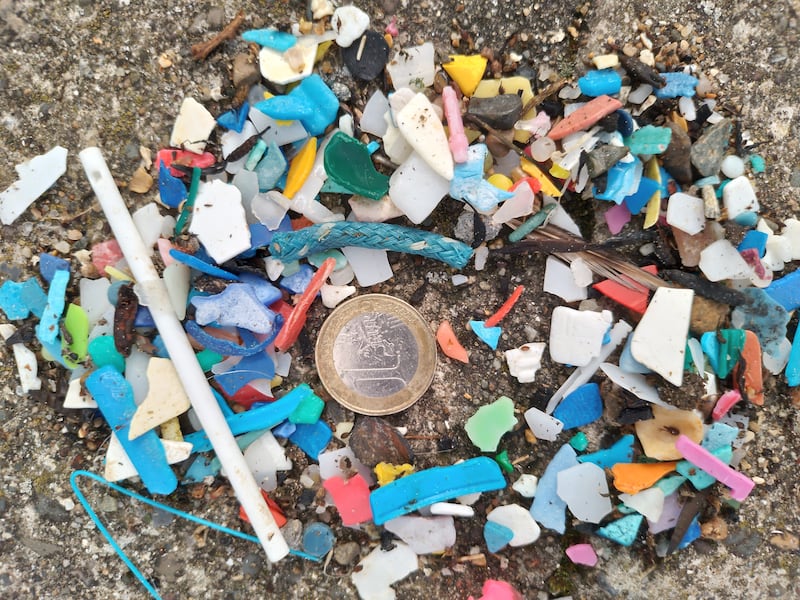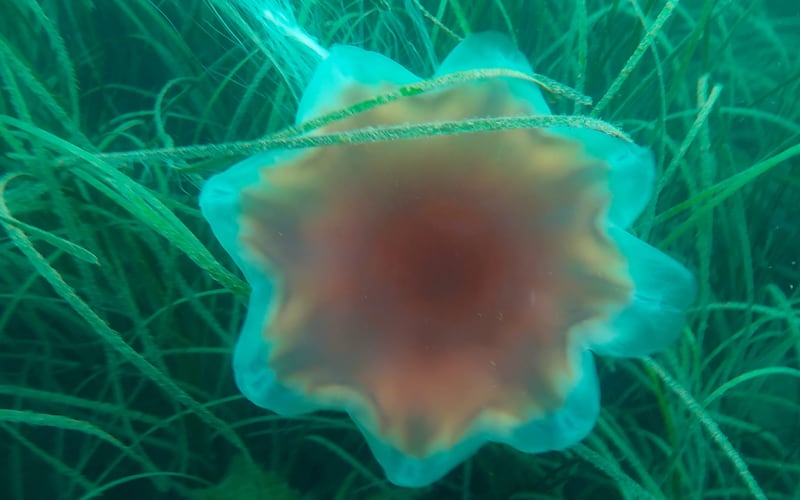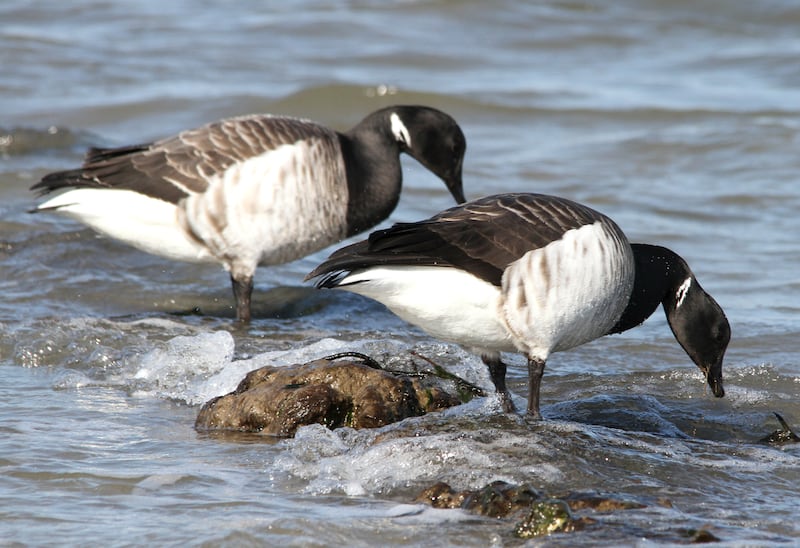The 2023 autumn survey of the Irish coastline by hundreds of Coastwatch volunteers has found a rich and diverse mix of marine life, especially new areas where seagrass populations are thriving, but also evidence of pollution from sewage and agricultural run-off.
Three surveyors reported new seagrass beds – one “lawn” in Co Wexford and two “meadows” in Dublin and Galway.
“The seagrass lawn has reappeared in a spot where it was last seen about two decades ago, giving hope in nature’s ability to recover,” said Coastwatch director Karin Dubsky.
Seagrass plays a critical role in maintaining marine biodiversity and seawater quality, while capturing carbon. It captures carbon up to 35 times faster than tropical rainforests, accounting for 10-18 per cent of total ocean carbon storage globally despite covering less than 0.1 per cent of the seafloor.
READ MORE
It can occur in different forms depending on species and becomes visible when there are very low tides. “Often the giveaway is loud brent geese families appearing out of nowhere to feast for that short exposure time,” Ms Dubsky explained.
A beach guard alerted Coastwatch of a large seagrass bed in Scotsman’s bay Dún Laoghaire, Co Dublin, she said, which contrasted with the “atrocious” levels of sludge killing seagrass beds at nearby Merrion strand. While global populations are declining, she said it was unclear whether this was the case in Ireland.
Chronic sewage pollution was found at a number of sites. These are typically identified, Ms Dubsky said, by tomato plants growing on water surfaces “in the splash zone” and sewage, especially wet wipes and sanitary waste, at the tide mark.
Carpets of opportunistic green algae and ectocarpus sludge layers were reported in parts of Dublin Bay and West Cork “with small streams and pipes carrying high or extremely high nitrate discharges into bays and feeding these problem algae”.
The problem was worst in West Cork due to agricultural run-off, while in Dublin it was due to urban pollution and run-off from roads, Ms Dubsky said.



There are huge numbers of dying cockles on the Duncannon shore in Co Wexford. This is at least the third such event in the past five years with research required on the cause. “Unknown isn’t good enough,” she added.
One piece of good news was less evidence of microplastics. “So far, shores which typically suffered plastic nurdle pollution after bad weather are reported way cleaner or free of them.”
This summer was the wettest since records began when more bathing waters were closed or warning notices erected, often as sewerage systems could not handle the combined load of rainwater and sewage, Ms Dubsky said. It coincided with a European court ruling that implementation and enforcement of EU nature law is not adequate and Ireland needs to set out clear protection and management measures for habitats and species of EU importance.
Ms Dubsky highlighted good examples of restoring beaches, notably Grattan beach in Galway, where Coastwatch regional coordinator Dr Kevin Lynch was working with the county council and local residents “to employ simple green methods to restore a beach, instead of putting more rock armour in and having a high carbon footprint beach clean machine remove the vital seeds and seaweeds which would allow nature to maintain itself”.
[ What is the EU’s nature restoration law and why was it controversial?Opens in new window ]
The Coastwatch survey is the longest running citizen science shore audit on the island of Ireland and was started with the support of The Irish Times and former environment editor Frank McDonald in 1987.
The 2023 version has been assisted by a new website, with a new way of booking a survey area and an app for volunteers to input data. Volunteers choose 500 metres of seashore as their “survey unit” and spend about an hour carrying out an eco-audit at low tide, usually with a friend or family member.
This year’s survey coincides with fishermen discovering horse mussel populations on the Kish and Codling Bank off the east coast. It is Ireland’s largest mussel protected under EU law and was previously declared “functionally extinct " in Ireland by the National Parks & Wildlife Service. “The fishermen are findings clumps with adults and babies which is fantastic news,” Ms Dubsky said.
Coastwatch’s survey continues until mid-October. “Any low tide when the sea is safe between now and October 15th is good,” said Dublin Fingal coordinator Michael Walsh.
“If you can find a little sunny break between all these weathers bashing the coast, you might find the more unusual too – animals which live in deeper water washed up or archaeological features exposed in sea banks or on the shore.”
Ireland has experienced oddest weather this year, Ms Dubsky said, with new sand banks appearing and reports of seagrass beds disappearing, while others are flourishing. Access to and use of many shores is changing with evidence of sea level rise in some locations.
“There is so much happening and planned in the Irish coastal zone, that we really need as many volunteers as possible to go out onto the shore at low tide and report back. The status of, value, use and management of our coastal area has been in the news more often this year than ever since this State was founded,” Ms Dubsky said.
The Government has designated two large areas for seabird protection and the first offshore wind designated maritime area plan had been published, for off south Wexford, Waterford and Cork. “We need large-scale citizen scientist participation to get a good snapshot picture, especially in the areas where management is most critical.”
The Government had also created a new marine management authority (Mara), proposed two new special coastal protection areas for birds and awarded licences to four offshore wind farms to produce 3 gigawatts of electricity off our Dublin, Wicklow and Galway coast.
“These big ticket events are punctuated by a steady rain of public consultations on port developments, foreshore licence applications to investigate where to locate offshore wind, cable landfalls and substations and local authority climate action plans which are being rolled out,” she said.
“Before the year ends we are due to see the Marine Protected Area Bill and a third river basin management plan for the Republic which is likely to have a specific coastal actions chapter and should also cover the transboundary waters between Ireland north and south,” she said.
“In this almost bewildering list of plans, designations, nudges and consultations this citizen science survey and the data it generates is of particular importance,” Ms Dubsky underlined











